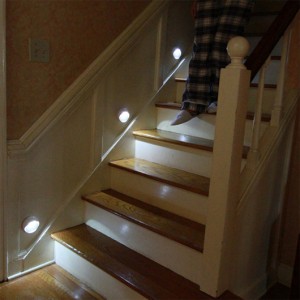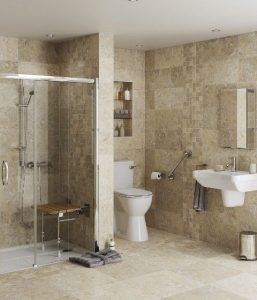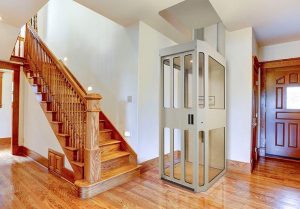90% of Americans Indeed Want to Age in Place
By Joanne Peters
It seems nearly everyone has heard the term “aging-in-place” AARP reports that about 90 percent of older adults would choose the many health and psychological benefits associated with staying in the home and community they have known for years. Can we stay in the house we have lived in for the past 30 years, the place we preserve to be most comfortable? Your answer lies in the safety of the home.

Are you thinking about living in your house forever? Before making that final decision to Age-in-Place, there are some questions to ask and perhaps enlist a professional to check out the home for future safety issues. Prevention is the keyword and the only way to Age-in-Place safely. A home safety assessment will undoubtedly ease your mind when you are faced with this decision.
Whether you need to get, your dad’s house assessed by an Age-in-Place Advisor or need someone to make the necessary modifications, a professional can help you determine what it will take to Age in Place safely. It is essential to recognize our ability to maintain the inside and the outside of our house. The physical ability to climb up on a ladder and clear the autumn leaves must be off-limits and delegated to a family member or qualified professional. Our mental stamina to keep the house cleaned, organized, and clutter-free may be limited. Even simple items cause fall hazards, such as trips on throw rugs, which are common threats to safely aging in place.
One of the essential areas of the house that will need remodeling by a professional is the traditional bathroom. Recent studies have shown that for people age 65 and older, falls account for approximately 60 percent of all injury-related emergency department visits and over 50 percent of injury-related deaths annually. Not surprisingly, 80 percent of falls in the home occur in the bathroom. The first order of business would be to install grab bars. These will be the best investment if you plan to age in place. Women especially enjoy a nice warm bath. Protect yourself from slipping while getting in and out of the bathtub. A non-slip mat on both sides of the tub will provide a safe place to land. Another safety feature for a tub/shower is a bench as another level of safety.
The importance of looking into the future will bring a whole different view of aging in place to light. Lighting is an important safety feature to think about for seniors both inside and outside. As our sight begins to diminish, the need for extra lighting is essential. Reading lamps to hallway floor lighting are all things we typically do not think of but are crucial for the aging senior to continue existing safely in their homes.

The two-story home is hazardous. Physical therapists treat more patients every day from falls downstairs and trip on rugs. It is still possible to live in a two-story home as we age.
An eye-opening, scary encounter with an older gentleman caused me to shudder with fear one day. As I was visiting him in his home, he wanted to demonstrate his ability to jump on his bouncer! He was so proud of his fitness routine, but his chosen location for the bouncer was not safe by any stretch of the imagination.
He did not have any family close by to watch out for him, which is true of many seniors. As we walked through his home, it was apparent that this home was not safe for a single man. His bedroom was on the second floor, and he had to climb a surprisingly steep flight of stairs to get there. What I noticed immediately, and which raised the red flag was the safety issue of the handrail. It was literally a moving piece of wood; any weight against it would have snapped off the stairs, and down he would have fallen. There was a nice landing area at the top of the stairs, perhaps 8 x 8, which is where we found his bouncer—snuggled up right next to the railing overlooking his living room! No, No, No, my inner voice called out as he began to demonstrate his agility to hop up and down like a monkey! One bad hop and that railing would take him for a ride to the living room floor. A deadly accident was waiting to happen. This man was in no way a candidate to age in place. In this case, his home was not safe anymore. He needed to have some major repairs and renovations or, better yet, move to a safer environment where he was not alone anymore. However, as we age, we do not understand how unsafe our homes can become, especially if we do not maintain them over the years. If a senior wants to stay in a two-story house, they should consider installing an elevator or an automatic chair that takes you up to the second level. These, however, are expensive items to install.
Here are some of the top priorities that should be addressed when considering whether aging in place is best for you. First, begin with a Home Safety Assessment. A professional can identify the most dangerous features that need attention when a senior wants to age in place.
Second, the Kitchen and Bathroom should be the concentration for modifications that allow seniors to live alone to continue cooking for themselves and avoid any slip hazards in the bathroom.
Third, identify what home maintenance is required to keep the home in good condition and keep the property value up. Perhaps a professional landscaper or handyman needs to be on speed dial. This gives the family and homeowner peace of mind that the home and yard will be maintained nicely. Remember, if you plan to age in place, your home will require maintenance, you will need to pay for these services, so ask yourself if my house is still affordable for me to live here. It may be better to search out a retirement community so you do not have the safety hazards or the expenses of maintaining your home.
Fourth, consider the cost of in-home security. Some security features can help you live safely, like, installing emergency response systems. If you live alone, you want to make sure you are not isolated. Hence, a remote monitoring system and active computer for any Telehealth visits with your primary care physicians are essential. Security alarms can be connected to the local emergency responders for theft and in case of any emergency.
And finally, if you do not drive, you will want to make sure that you have a transportation service that can get you out to your appointments and to grocery stores when needed.
I hope these few tips will help you with the conversation about Aging in Place with your family and a way to evaluate your decisions in the future.
The question becomes; Do I Age-in-Place or choose a Retirement Community. By planning and assessing your current environment, the answer will be clear.
Until next time…..
Joanne
Remember, you can Age-in-Place with the right layout of your home safely and wonderfully.

















